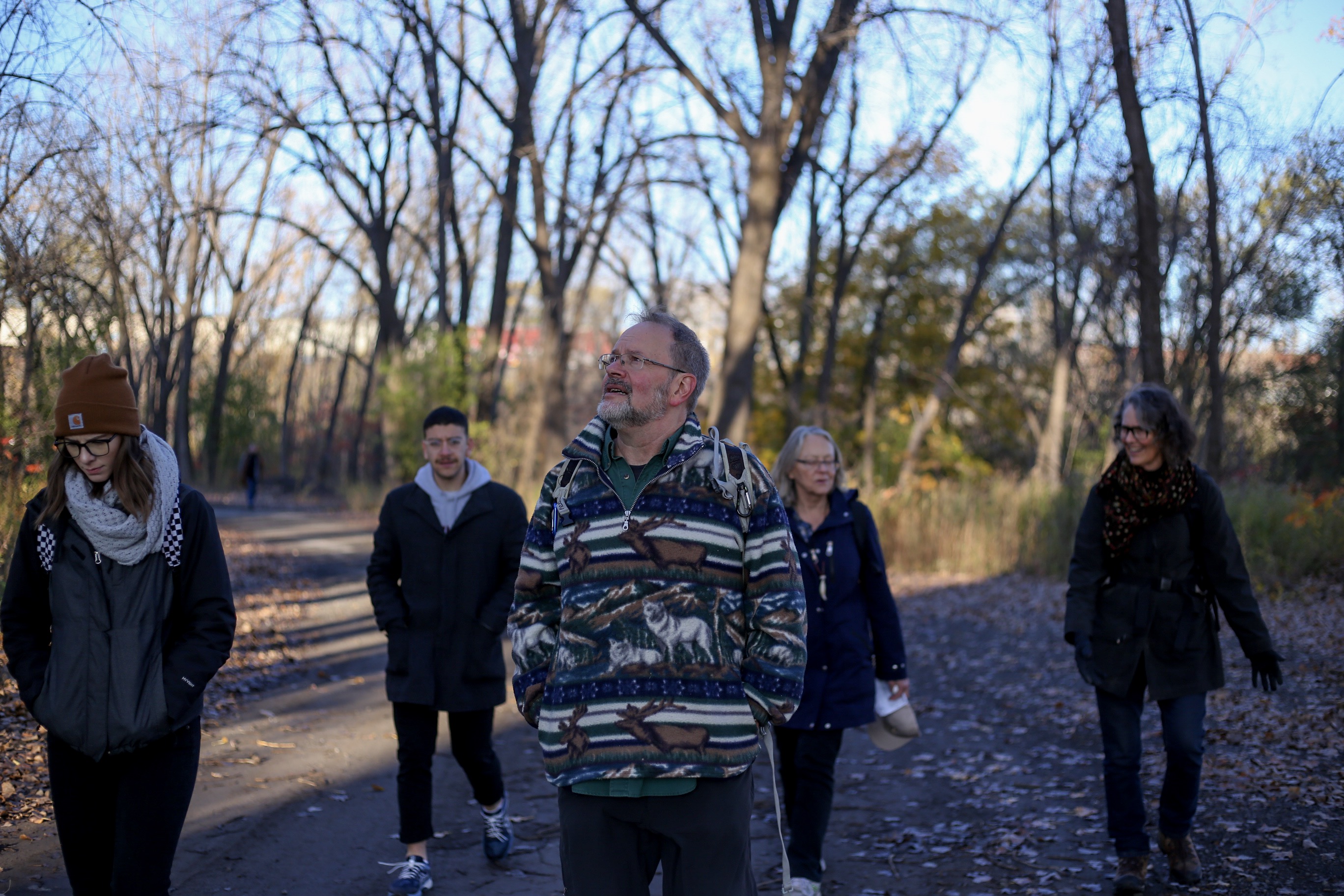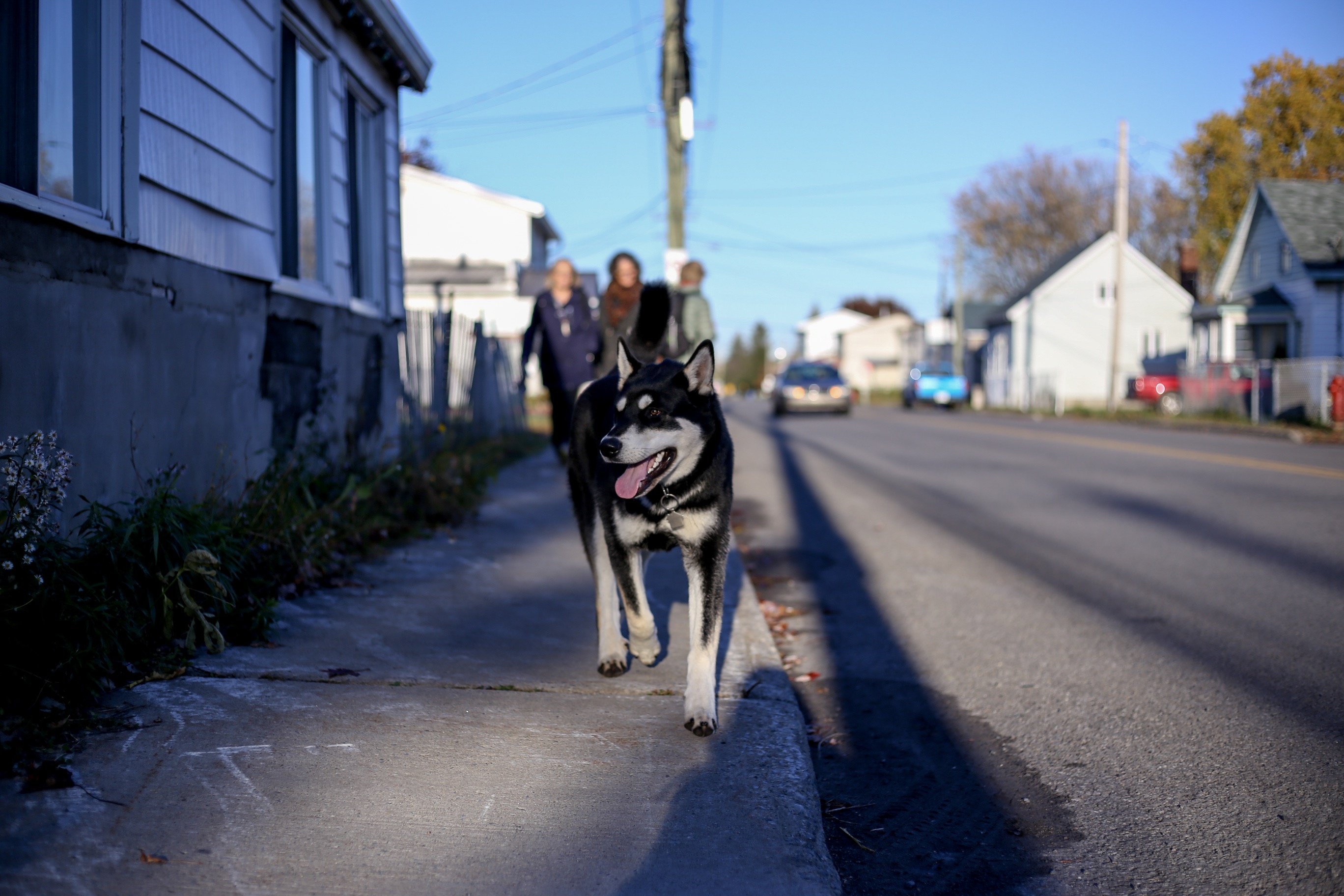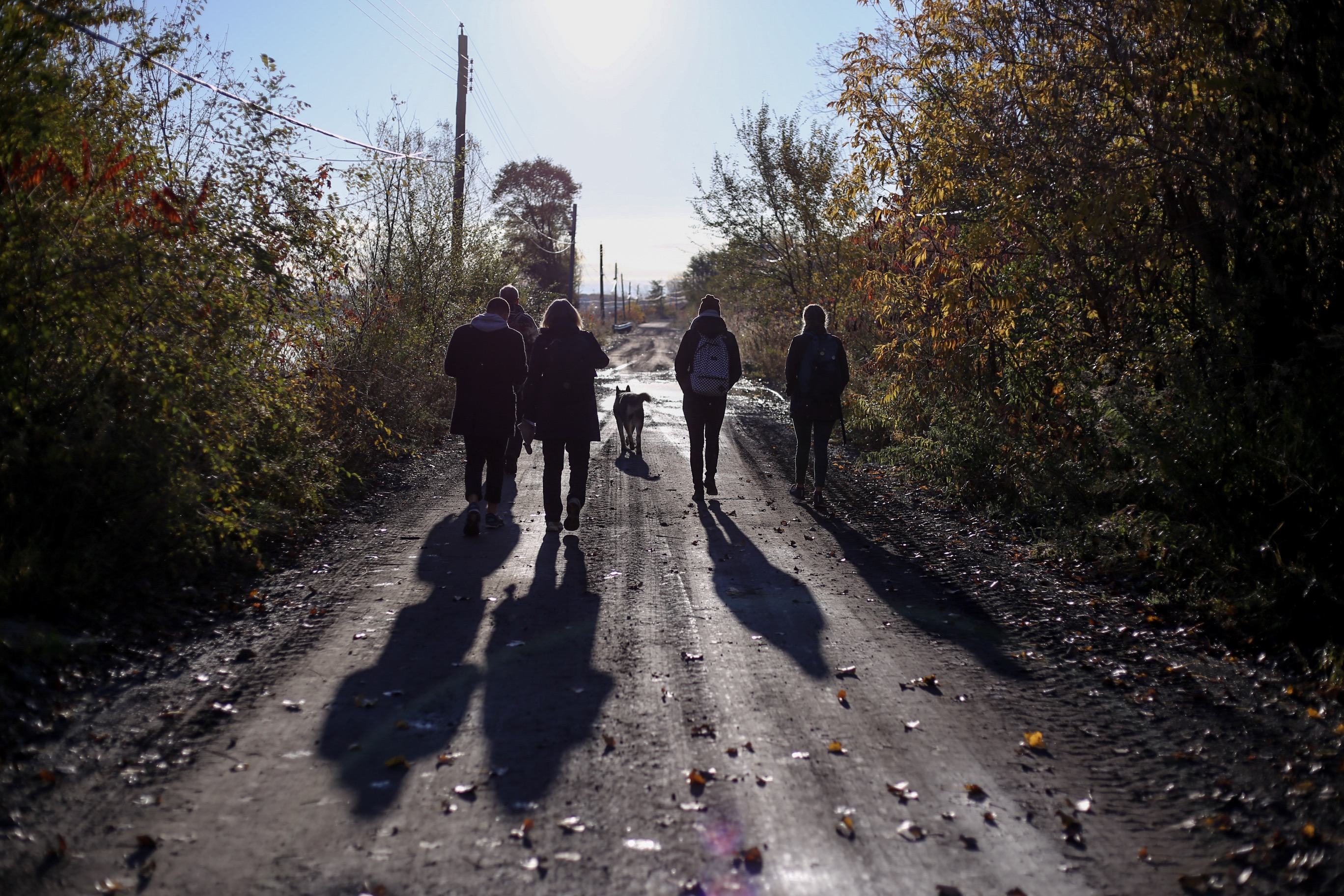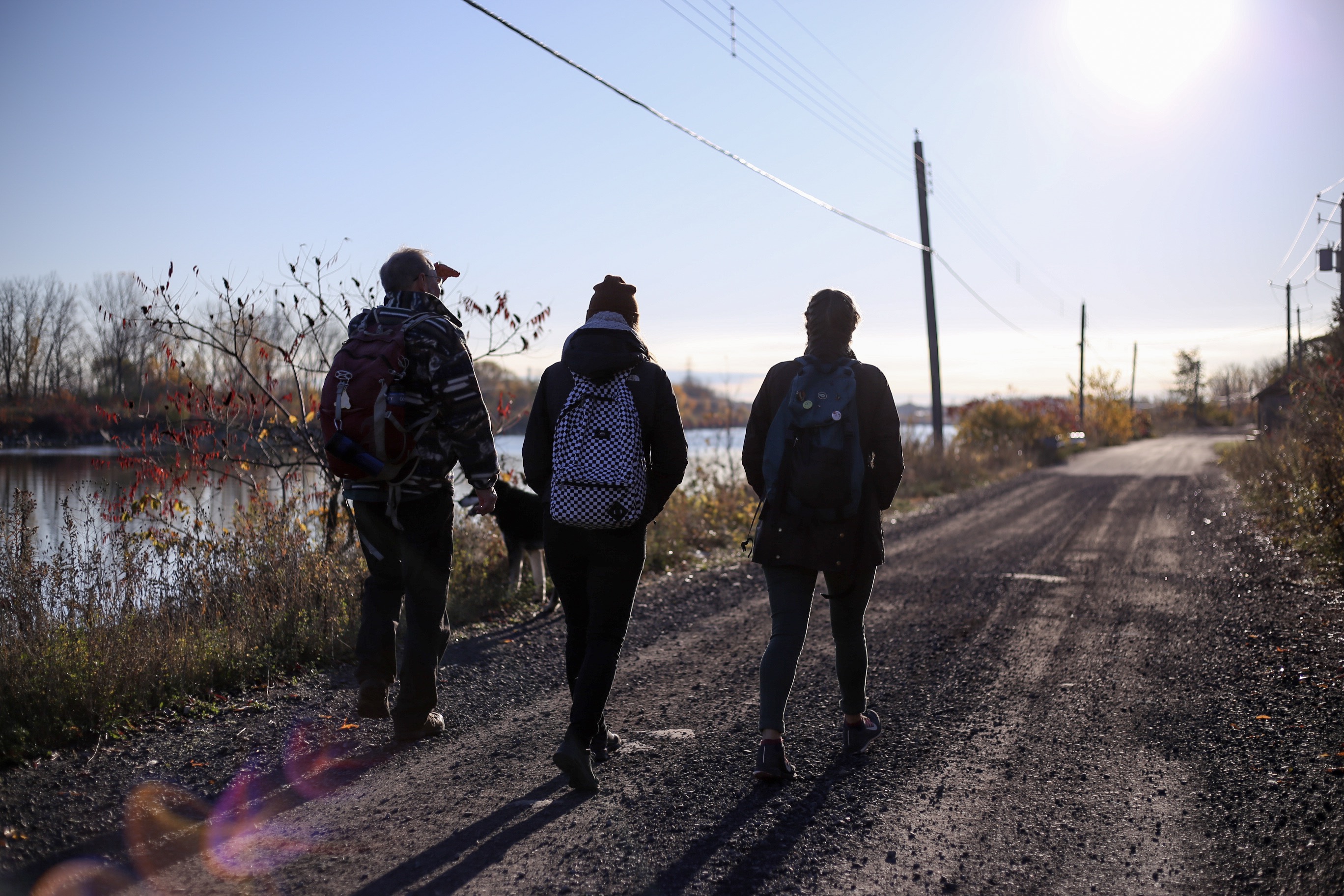Students and faculty members of the department of theological studies trekked on Saturday from sunrise to sunset, from the south shore’s Indigenous community of Kahnawake to Montreal.
The event happened two days before the Theology in the City conference and was a way to physically perform the land recognition opening speech for most events at Concordia University.

Christine Jamieson, a speaker at the conference and theology professor, was present at the march. She is native from an Indigenous community in the Frasier Canyon in British Columbia. Before the march, she performed a smudge; a traditional cleansing ceremony using sage smoke to get rid of any negative energy. In many Indigenous communities, smudges are performed as a way to align what is called the seven grandfather teachings – humility, bravery, honesty, wisdom, truth, respect, and love.
“If you look at those seven teachings, each one is an important component of living, what I would call, an ethical life, but maybe what most Indigenous people might say is living a good life,” said Jamieson. “Anything that we can do, whether it’s a smudge or a sweat lodge, these are really ceremonies that are meant to help us to walk more freely and more ethically in a sense.”
Jamieson said that recognition is a two-way path, and that there is a lot to learn from Indigenous cultures and their relation to land and nature.

Since the first encounters, European settlers have always negotiated in favour of their economic interests rather than in harmony with Indigenous people’s beliefs. Those beliefs have been ignored for centuries, long before the creation of the Canadian Confederation.
“I think when we acknowledge land, it’s really to try to bring us back to that relationship that we have with this land and with everything around us,” said Jamieson. “I really believe that if we can do that more consciously, we will be better able to live those seven sacred teachings which brings about that balanced life.”
She continued that it is primordial to acknowledge this relationship since it is paramount for the survival of humans. “We are so vulnerable, we are the weakest in a sense, and yet we have so much power to destroy what we are utterly dependent on,” Jamieson said.
Along the walk, the small group of seven came across many infrastructures marking centuries of colonial federal jurisdictions. The Mercier bridge, inaugurated in 1934, and the Seaway, in 1959, for example, have forced hundreds to be relocated by the government in the early and mid-1900s and caused the death of many steelworkers. A 10-metre steel cross was raised in memory of the lost men.
Nowadays, the federal government can no longer act as such without legal backlash, something Anderson is grateful for; but this doesn’t mean that all problems are solved. Between 2004 and 2014, 400 out of 618 Indigenous communities were under at least one water advisory, reported the CBC. And that is only the tip of the iceberg.
However, Anderson is optimistic about the upcoming years. Although the previous Liberal government failed to address many promises regarding reconciliation with Indigenous communities, last week’s re-election may bring changes.
Anderson explained that minority governments that work along more progressive parties – in this case, the NDP – tend to propose more changes to social issues such as reconciliation with Indigenous communities. He hopes to see the next government address those issues such as drinking water.
Feature photo by Alex Hutchins, video by Arianna Randjbar





